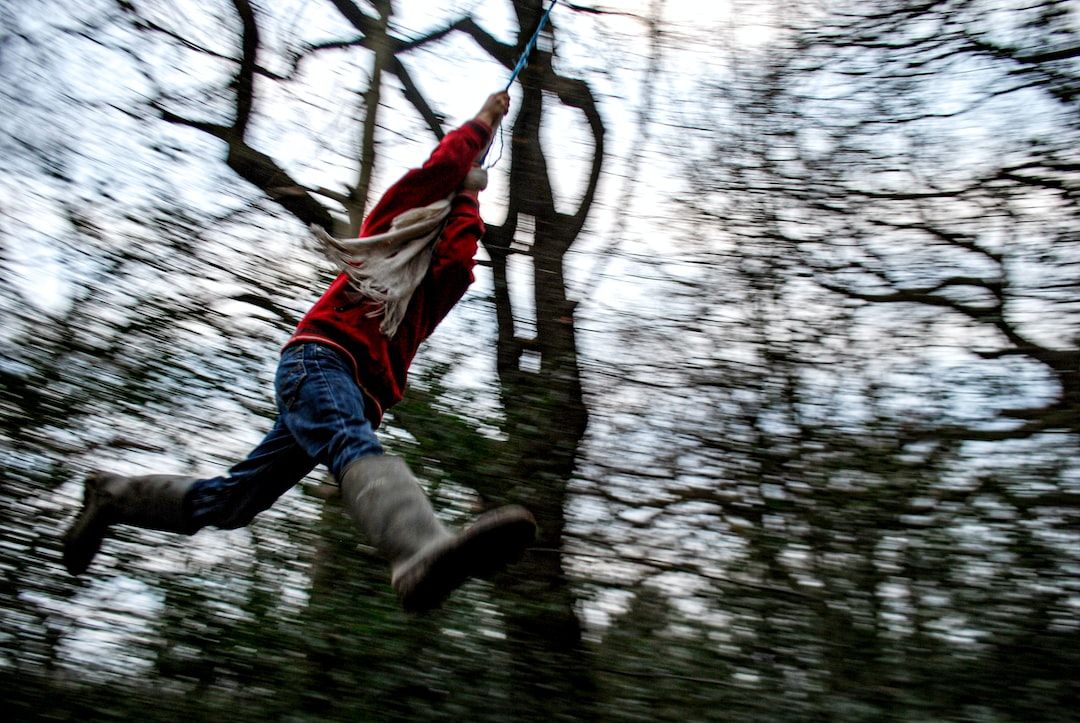
Blog
Stories from my personal journey learning about and delivering Nature-rooted programs across three different countries
Could I? Should I? Helping children learn to assess risk for themselves...
Caylin (Forest Schooled)

Empty space, drag to resize
The children created a rope swing this week. The activity was inspired by a jump rope that had been thrown onto a branch and left dangling there. It was within easy reach if you stood on the picnic table that was nearby. Someone discovered it and decided it would make a great swing. Soon there was a line of children, each wanting to take a turn on the new piece of play equipment. I saw them doing it from afar and thought, “Hmmm... jump rope swings haven't been considered on my risk assessment...” So I approached the group to inspect things a bit closer. The children were leaping off the top of the picnic table and swinging on what looked like the cheapest jump rope someone could find in a shop – I could see the material straining under their weight and knew the bit rubbing against the branch wouldn't hold up long.
After doing a dynamic risk assessment (a risk assessment done on the fly) I predicted that eventually the rope would break and someone could get hurt... But I didn't want to stop the activity because I felt the benefits of playing on the swing were brilliant (such as building physical strength and coordination, developing social skills like negotiating taking turns, as well as personal development of self-esteem and confidence, especially for those overcoming fears of jumping off).
So I quickly grabbed a different rope that was much stronger and meant for climbing. I paused the children's play briefly and explained my worries about the strength of the rope and that I had a better one that was stronger. We also had a discussion about how to stay safe while doing the activity and the children suggested and agreed to the following safety ground rules:
- Everyone would hold on to the rope with both hands while swinging.
- If you are not swinging, stay clear of the area around the swing so you don't get hit by the person who is swinging.
- Try not to spin too much because it's harder to land on your feet when you let go.
And then the play continued. The children loved it and were having a great time. There were a few mishaps where some of them slipped and fell, resulting in some bumps and a few tears from the younger children (more out of fright from falling than actual pain). However, this offered great benefits too because the children who had fallen gathered their courage and decided to try again despite being fearful. They were also supported by the older children who acted as mentors, giving lots of advice and encouragement. This provided an opportunity for them to experience what it was like to get 'back on the horse' and overcome their fears.
Then one boy named Jordan decided to make the activity more exciting. When it was his turn, he exclaimed that he was going to do it with a running start. He wanted to sprint down the length of the picnic table and launch himself onto the rope to swing with more speed. Again I thought to myself, “Hmm... another thing not on my risk assessment...” I thought quickly about how to handle it and I remembered a trick a friend and former colleague of mine used to use with children in these sorts of situations. She developed a child friendly means of assessing risks and benefits based on these two simple questions: Could I? Should I?
This is how the methods works: After establishing what the child wants to do and why (In this case, Jordan wanted to swing faster and test his strength), you ask them to consider, “What COULD go wrong?” and “How COULD you stop that from happening?” Based on the answers to these questions, you then ask them to ask themselves this question: “Should I?” This places the responsibility for keeping safe on the participant and helps them develop the skills to do so wisely. My friend had developed a worksheet which she provided for the children to fill out if they wanted to do something new and risky. I saved that worksheet and, with permission, wanted to share that with you here: Could I? Should I? Risk Benefit Assessment.
I didn't have the worksheet with me at the time of the rope swing adventures, but used the questions from it to prompt a discussion. So before Jordan attempted his running start I said, “Jordan, before you try that, is there anything that COULD go wrong?” He thought for a moment and said, “Well, I could slip on the table I guess.” The other children joined in, “Or you could miss the rope when you jump and fall!” and “If you did fall, it would hurt more because you're going faster!”
I could see him begin to look disappointed because he assumed I wasn't going to let him try it. But then I asked, “Is there anything you could do to prevent these things from happening?” He said, “I'll be careful!” So I asked, “How?” He struggled to answer this, and said as a half statement half question, “If I fall and get hurt I won't do it again?” I suppressed a small snort as I thought to myself, “I think his risk assessment skills need some work...” Then I replied, “But that won't prevent you from getting hurt in the first place, will it? Is there anything you could do about your speed?” His eyes lit up as he thought of an idea and he said, “I could jog rather than run and pause if I need to before jumping off to make sure I don't miss the rope!” The other children and I all agreed with him that this sounded like a good solution. So he did it. He jogged towards the rope, gave a little a leap and swung on the swing with a huge smile on his face. When he was done swinging, he let go of the rope and landed on both feet, safely.
More Posts
WANT TO GET FOREST SCHOOLED TOO?
Subscribe to my email letters, something special from me to you so we can learn together. Each one is filled with heart-felt stories from the forest, resources you may find useful, and things that hopefully bring a smile too.
Thank you!
© by FOREST SCHOOLED
